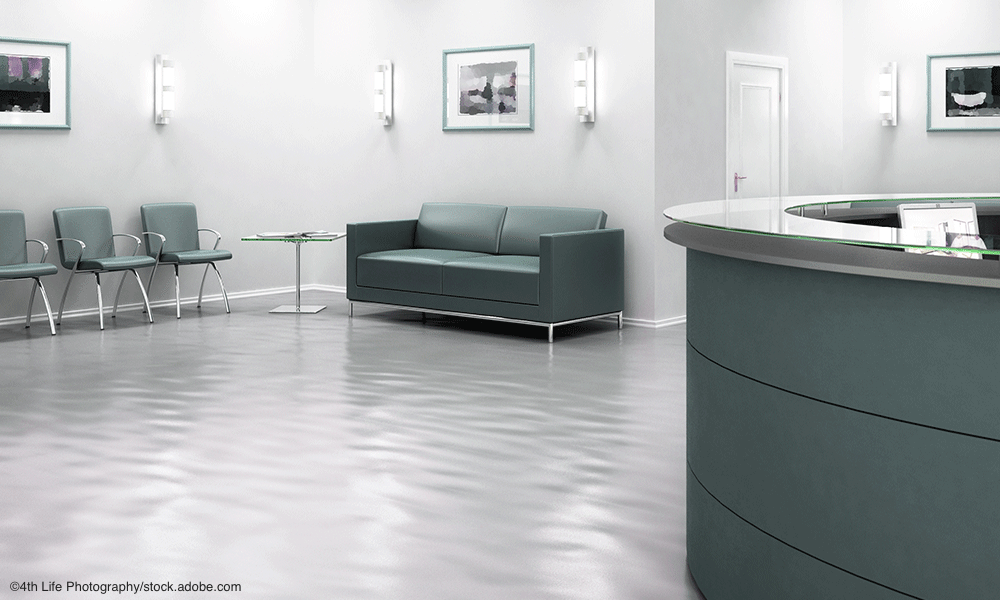How air-quality science can improve physician practice office safety
Apply lessons from this discipline to create safer care environments for your patients.

While many physicians' offices have instituted distancing measures and increased the frequency of disinfecting heavily used surfaces, few have communicated new policies to address air quality. As healthcare providers continue to seek effective tools to prevent further spread of a highly contagious respiratory virus, practices are learning how air quality affects infection control, and ways air-quality technology can strengthen their disinfecting processes and procedures.
While there is no single authority on best practices to establish a safe environment within the physician's office in the age of COVID-19, the Centers for Disease Control & Prevention has periodically updated its interim recommendations to healthcare providers for routine infection prevention and control practices during the pandemic. This guidance includes a section titled "Optimize the Use of Engineering Controls and Indoor Air Quality," which refers to physical barriers, proximity considerations, and a building's heating, ventilation and air conditioning (HVAC) systems.
In the past, physicians may have given little thought to air quality in their offices or dismissed the use of advanced mechanical systems, filtration, and related technologies as prohibitively expensive. But COVID-19 is forcing a change in the way healthcare professionals think about infection prevention in buildings, and innovative practices are introducing air-quality improvements into their cleaning and sanitation strategies.
This includes the use of next generation purifiers or portable HEPA filtration units to augment air quality where permanent air-handling options are unfeasible. By using next-generation air and surface disinfecting purifiers physicians can remove fine particles as well as destroy harmful contaminants throughout an enclosure, by recreating oxidation and ionization processes found in natural sunlight. This turns the oxygen and humidity in a room into super oxide ions and hydroperoxides, essentially transforming the air into a cleaning agent.
Products on the market today may combine ultraviolet light with electrostatic screens, low-micron filters, and other advancements to produce outstanding results. But today’s more advanced air-purifiers have been shown to remove more than 99% of airborne and surface contaminants, killing pathogens on contact and destroying microorganisms in the air and on surfaces.
Long a fixture in hospitals and surgical centers, air purifiers have grown increasingly affordable as manufacturers have scaled models to suit a variety of applications, including clinics, skilled nursing centers and other businesses across industries. This makes them an attractive upgrade for the physician's office at a time when budgets may have been stained by months of limited operations.
When leveraging the use of these purifying systems, organizations should also consider other ventilation problem areas to address that will improve the air quality in their space. This includes:
- Manage layout and airflow. Protect staff and patients by moving air from clean areas to less-clean areas. Where possible, position aerosol generating procedures and other sources of airborne contaminants near return-air vents rather than drawing that air past staff workspaces or patient waiting areas.
- Consider germicidal irradiation systems. For more than half a century, hospitals have used ultraviolet light to combat the spread of tuberculosis and other diseases. Upper-room germicidal irradiation systems project microbe-killing rays above the heads of room occupants and use engineered airflows (fans, essentially) to circulate the room's air through the upper portion of the enclosure.
- Increase outdoor air intake. An HVAC consultant can also help to investigate whether the practice can safely increase the percentage of outdoor air drawn into the space.
- Limit access to ventilation controls. Air quality is best maintained with continuous ventilation, so consider restricting access to temperature setpoint or occupancy controls. Set exhaust fans to run continuously during operating hours.
- Explore filtration additions. These may involve upgrading existing filters or adding filtration equipment. An HVAC professional can evaluate how to make improvements without sacrificing necessary airflow or straining mechanical systems.
Air-quality improvements offer an effective means of demonstrating a practice's commitment to protecting patients and employees, while giving them peace of mind. Practice leaders who follow the CDC's guidelines and consult with professionals will likely identify opportunities for immediate air-quality improvement and can plan to address less-pressing needs over time.
About the Author
Carl “Buzz” Thompson is the CEO and Founder of GermFree MD, a leading-edge indoor infection control technology company.